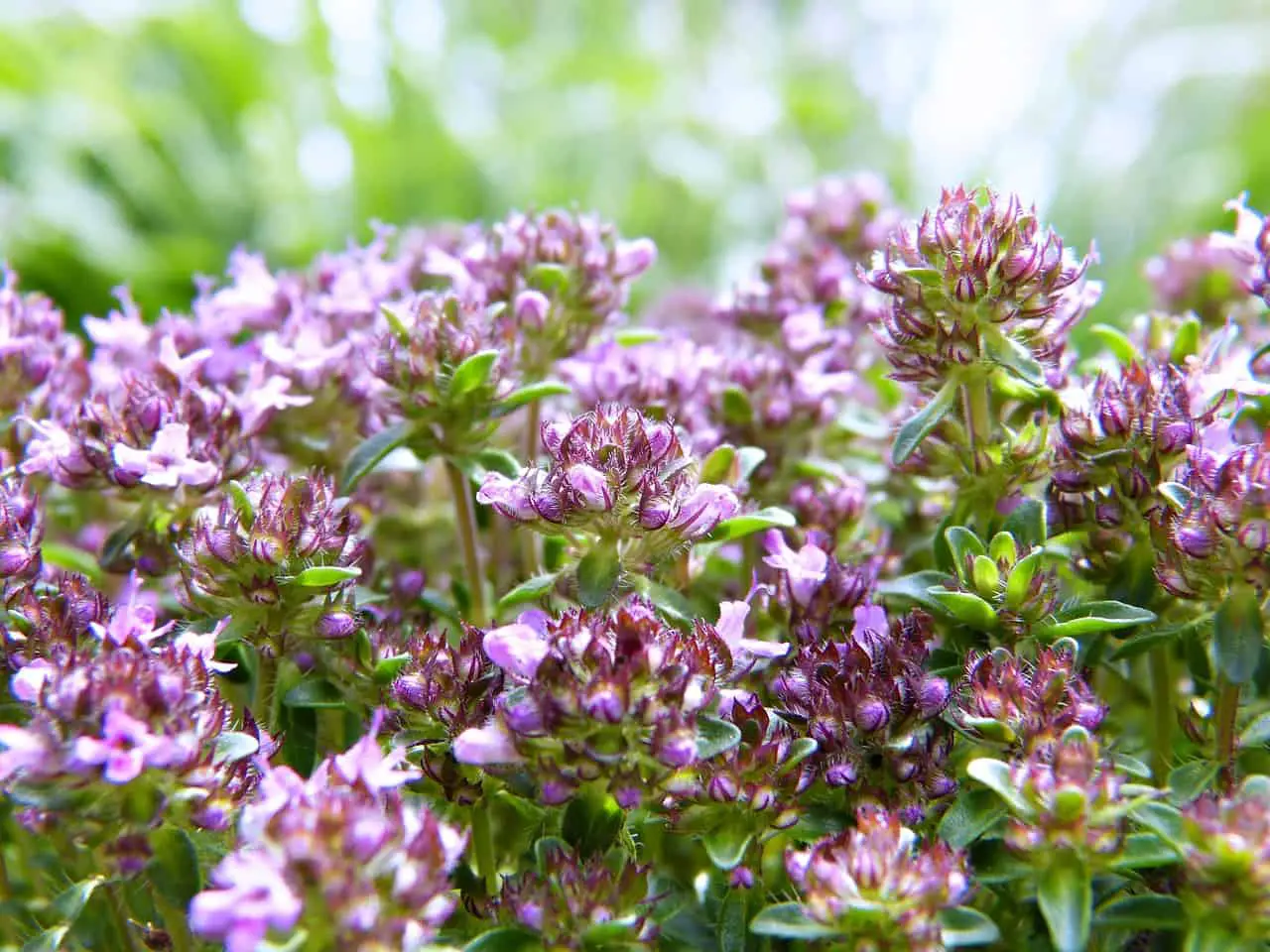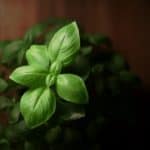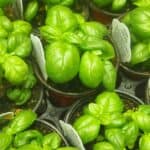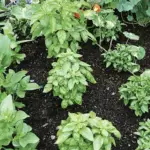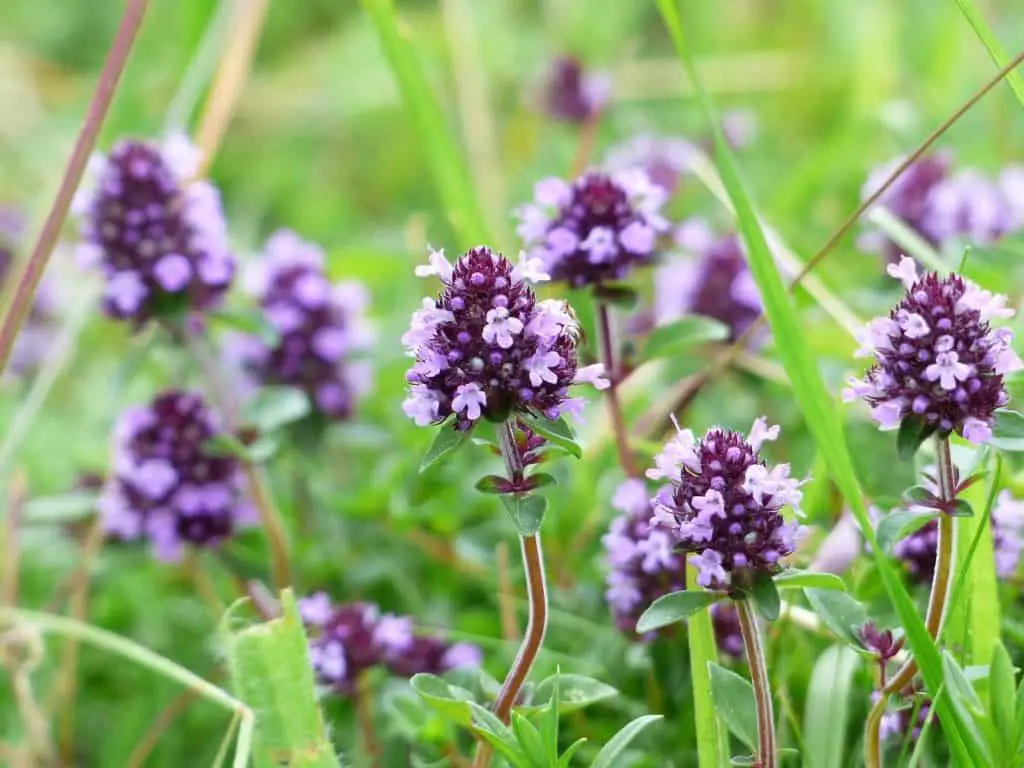
How To Plant, Grow And Care For Your Thyme
Welcome to this comprehensive guide about how to grow thyme. Here we will cover a lot of the common questions that might come up when you want to take on the endeavor of growing your own thyme.
Below we cover topics such as growing it from cuttings, from seeds or when to harvest thyme. Feel free to navigate throughout the page with the table of contents below.
How To Grow Thyme
Growing thyme successfully comes down to a lot of patience and some trial and error even. I have been growing thyme for many many years. It’s a herb that can live on for well over a decade. So growing your own thyme is basically like an investment.
- A fun fact about thyme is that there are over 200 different varieties of it all over the world. One of my favorites is lemonthyme. But there are so many types that the size and the shape differs a lot.
- Normally however they get somewhere between 30 – 40 cm tall on the higher end. Other varieties are growing along the shape of the ground.
- I regularly use these and groundcovers as they serve two purposes then. Both for culinary uses and for making it pretty in the garden.
But let’s start from the beginning on how to grow thyme successfully. Growing from seed will take a lot of patience. If you have a friend or family member that could lend you a cutting then thats a nice shortcut you can take. But that’s a topic for further down. Growing from seed though is a nice way of getting it the way that you want to have it. I usually start by getting a nice pot and making sure that the soil is healthy and there is good drainage. Then I sprinkle the thyme seeds over the surface. Lightly press them down and then water the soil.
Following the steps above will give the best potential for having a nice bushy thyme plant one day. Place the pot in a window where it gets about 6 hours of sunlight during the day. If you want to keep it outside then have it somewhere it can get some shade during the day.
After having watered the soil liberally then you won’t have to care for it for a very long time. Thyme really likes to have well drained soil with little to no nutrients. Contrary to what I said in the beginning you might think, but long term thyme keeping this is the way to go. During the summer I water about every other week or so, letting the soil really dry out between the sessions. Harvesting and preserving the thyme is another story that you can read about below.
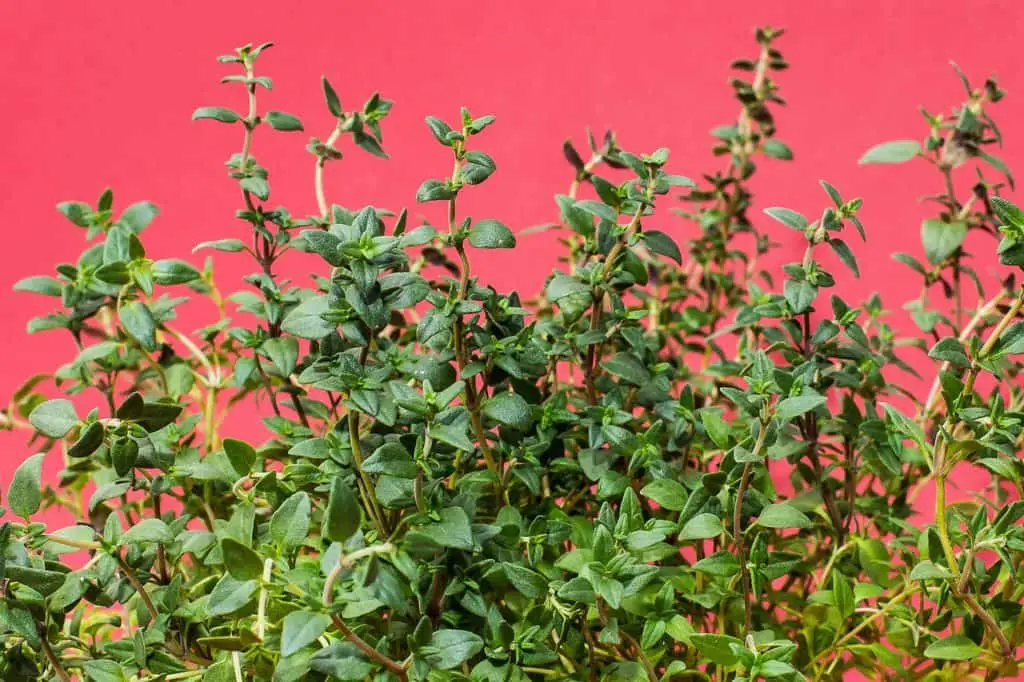
How To Grow Thyme Indoors From Cuttings
Growing thyme from cuttings is a really nice way to get a headstart on growing thyme at home. It is actually the go-to method I use whenever I want to propagate more thyme. I simply cut off a nice cutting that has a few cuts to it. Obviously you want to have a few of these so you can bulk up a nice bushy thyme.
After you have cut off the thyme sprigs then put them in a glass of water so they can start to root. This is the complete opposite of what you normally do with thyme. I have for one always learned that you want to prefer the thyme very little to not dull out the flavor but also keep the ideal environment for the plant. But when rooting cuttings this is the best way to go about it.
I usually leave it in the glass of water for no more than two weeks. At this point it should have had the time to root properly and is now ready to be planted in a pot or on freeland, the voice really is yours. Push down about a third of the spring below the surface of the soil so it has the time to root nicely. Keep an eye on it for the next couple of weeks or even months so you get the development that you want.
Now you have a completely new thyme bush to take care of. A perfect way to make use of any excess thyme plants you might have at home. If you want to read even more about this subject, surrounding growing thyme indoors from cuttings then read one of our articles here, How To Grow Thyme Indoors From Cuttings.
How To Grow Thyme Outside From Seeds
Growing thyme outside is a really fun way of growing this magical herb. It’s such a hardy plant that you don’t really have to worry about the conditions for starting to grow it. But there is some stuff that you want to follow of course.
Firstly we want to start planting the thyme in the springtime when the risk of frost really isn’t an issue. With almost every single new plant that you propagate you want to give a nice start in life. So when frost is non existent then you can sprinkle the seeds over the pot or the marked space in your garden where you want to grow it. Lightly tap it down and make sure that there is good drainage where they grow. Unless you don’t have that covered then the risk of rotting roots can become a reality.
Lightly water the seeds and then leave them to be. If you have read the paragraphs above then you know now that rhyme does best in a dry soil where there are barely any nutrients. But in the beginning we want to give the tiny seedlings a nice push so it gets off to a good start.
Thyme likes a place where it can get a good amount of sun but also needs some shade too so pick your location carefully. Thankfully, during the winter thyme grown outside will surely survive it . When the snow melts you will soon start seeing your thyme springing to life again.
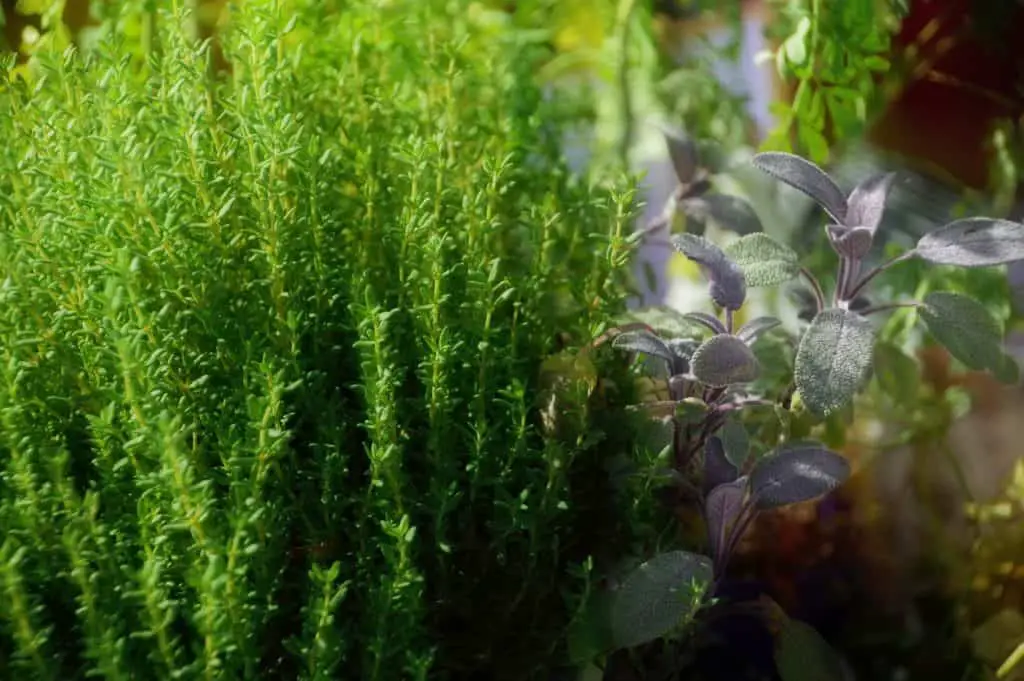
How Long Does It Take Thyme To Grow
Thyme takes a really long time to grow in the beginning. But once you have a good thyme bush established then cutting and pruning it every now and again will make it grow faster and faster. Before you know if you have more thyme on your hands then you will ever need.
- For newly planted thyme seeds it takes about 10 – 20 days for it. Based on planting the thyme in and around April and May then you can expect to make your first good harvest of it in July – October.
- But at this point then it won’t be a very large amount. Maybe enough to throw in a dinner or two during the week.
- But if you wait until the next year then you will be able to proportionally cut off a lot more thyme. The plant is older and can withstand more aggressive pruning.
How To Long Does Thyme Take To Harvest
How long it will take to finally be able to harvest some of your well earned thyme will depend on the environment and the progress it has made so far. When I plant a new one around April then I usually expect to be able to harvest some time during late summer to early autumn. But what I really like to do is leave it for the next year to have an even stronger and more durable plant.
Doing this I explained above will yield so much more in the long term. A rule that I like to follow is to cut off no more than 30 % of the plant. This gives it the opportunity to grow back again without any real issues. Cutting more than that will have a severe detrimental effect to the thyme plant.
Watering thyme is a very important topic and something you need to know how to do. Luckily we have an article ehre that will explain just that. Find it here, How Often Do You Water Thyme.
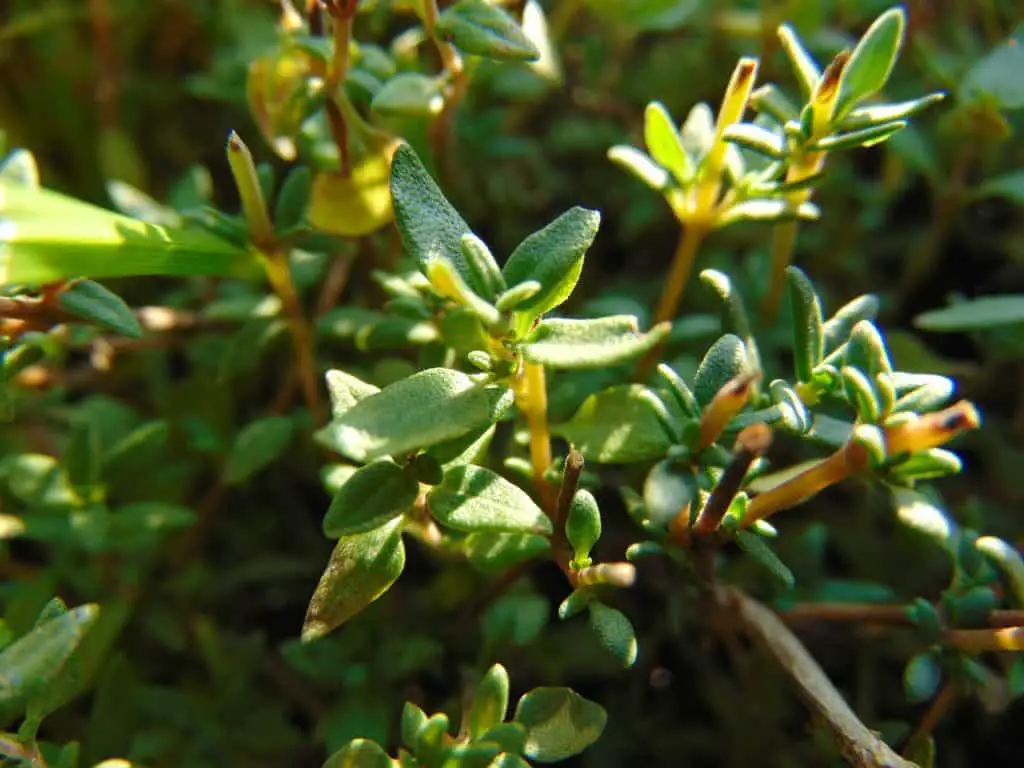
FAQ
What Conditions Do Thyme Need To Grow
Thyme is not a really needy herb to grow at home. It can manage fine in most conditions actually. Although some are of course better then others and will yield a higher harvest. A relatively dry and non nutritious soil is actually the best. Too much of any of these will dull out the plant.
Is Thyme Easy To Grow
Thyme is a very easy herb to grow at home compared to many other ones out there. Like we have talked about previously in this article, the herb really doesn’t need a lot of water, just make sure the soil is very well drained. As for nutrients and adding fertilizers, that’s a project you only really need to do a few times during the year.
How Many Hours Of Sunlight Does Thyme Need
Thyme doesn’t really require any more or any less sunlight than any other culinary herb. About 6 hours or so if you grow it outside will be sufficient. If you want to grow this one inside then bump those hours up a bit. Around 8 hours is a good amount. Just make sure that you grow it next to a window where the sun peaks in so you don’t have to move it around all the time.

